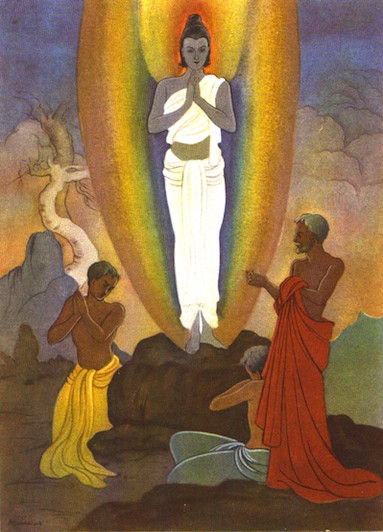The Lost Years: Once You See, You Cannot Unsee
- Julie Von Nonveiller Cairnes

- Nov 17, 2020
- 5 min read
Updated: Nov 19, 2020
For over 17 years, Jesus whereabouts is biblically unaccounted for — so just where was he?

Jerusalem Beach, Israel · Toa Heftiba · Unsplash
We all ask ourself these questions. Questions of real and original history, as opposed to the often completely false, rewritten or whitewashed accounts of history.
Truth versus Lies
Then there’s the historical use of the name of ‘Christianity’ in terrible deaths, torture, subjugation and slavery of many good and innocent people.
We have borne witness, over many centuries to the present day, to a horrific global obsession with murder, torment, cannibalisation and blood drinking all done in the name of Jesus.
Yet in spite of this obscenity, many have seen to the heart and pure essence of the teachings, and taken this religion to their hearts .
Even those whose forebears, family or community were subjected to that terrible inhumanity unto death, under the name of this religion.
And to this day it continues.

We know Jesus, the great Jewish revolutionary, would never have treated any being in any such manner.
This is the terrible paradox of the use of the name of ‘Christianity’.
In acts of violence.
Used in the horrific history of warfare, subjugation and terrible oppression, as opposed to its original doctrine of peace and liberation of the spirit.
Is this obscene corruption of the original teachings proof of the nature of evil within much of humanity? Not a rhetorical question by any means.
So how did this happen?
More questions arise
Just where was Jesus for the ‘lost years’- the seventeen years of his life not accounted for biblically?

One account mentions a man called Jesus known as Issa, who was injured almost unto death being taken into a monastery in India, and healed by monks.
Emerging many years later with new and very different teachings.
As a child he was well-known as a prodigy.
But when Jesus returned from those ‘lost years’, he astonished the people of his homelands with new gifts of almost magical skills. Incredible skills referred to in ancient yogic texts as arising only from particular and extensive meditation practices leading to enlightenment.
Photo · Sourabh Agarwal · Unsplash
His personal healing skills, light and life-giving energies were all extremely enhanced, as were his psychic abilities.
Magical healing abilities
He healed with laying on of hands or the use of the Word, and had developed strong premonitory and prophetic abilities, sensing danger and foreseeing future events.
And Jesus returned home as one of the greatest moralists of all time, with teachings that uncannily echoed the teachings of Buddha.
There are no such parallels between any other great teachers with such incredible exactitude, or synchronicity.
When examined closely, this cannot be said to be coincidence. It’s too exact.
Jesus and Buddha

It seems Jesus and Buddha were two different teachers with often the very same teachings.
Jesus emphasized virtue over justice, referred to spirit as existing within the soul or conscience.
Disagreeing with Old Testament teachings about ‘an eye for an eye’, and against taking vengeance against enemies.
He also advised the giving of offerings and other good actions be preferably performed secretly.
These were definitely not the traditional teachings of those times in his homelands.
The similarities don’t end there
Buddha means Light in Sanskrit, which Jesus also named himself in relation to his teachings.
In Sanskrit, the word Shasta means Master, which Jesus was also named.
Buddha was ‘Sugt’ — The Blessed — as was Jesus.
Both were named Prince, and also King

Both were ‘the one who fulfils the object of his coming’, and ‘the refuge of the tired/ the refugeless’.
The question of Jesus being a Buddhist seems to really become the question of how long he studied the Buddhist teachings.
And how deeply these teachings had been absorbed within his own.
Buddhism had been around for five hundred years by the time of the arrival of Jesus.
Yes, there were also major differences
Buddha made no claim to inspiration or revelation from any divine source.
On the other hand Jesus was a monotheist (believing in the one God), and also claimed equal status with the one God.
Convincing many via his miracle working, his authority via his teachings, and most noticeably in his resurrection from the dead. [James Bishop, The Eight Major Differences between Jesus and Buddha]
In these and other ways, Buddha and Jesus are then quite dissimilar.
So who was He really?

If we also look at the most ancient and earliest known paintings and depictions of Jesus, something else emerges.
At times we see a picture of a man appearing of African bearing with very dark skin and tightly curled short hair, but at other times with long lank hair, or even snow-white hair.
The evidence in front of our eyes is of the historical shifting and gradual morphing of depictions of Jesus across cultures and over the centuries. To finally that of a Caucasian man with long wavy hair and blue eyes. Possibly bearing similarities to the well-known defacing of ancient Egyptian paintings.
The Transfiguration · AD Thomas
Is this what happened?
Where dark brown skin was lightened and whitened, and the original broader noses either painted over or smashed off statues, thus whitewashing and erasing the real and original history.
Is this what happened with the multitude of depictions of Jesus?
Perhaps this is the Truth and perhaps not.
What did He really look like?

There are many written accounts from those times, and the reports of his appearance are varied.
The Book of Revelation includes John’s vision of the Son of Man:
“.. His feet were like unto burnt brass, His head and His hairs were white like wool, as white as snow”.
Quranic traditions give oral depictions of Jesus appearance, stating the prophet “did not say that Jesus was of red complexion”, rather He was “a man of brown complexion and lank hair”.
Lamentations states: ‘their visage is blacker than coal’ referring to His face.
One of the oldest and non-biblical depictions of Jesus was found in a Russian translation of an original Greek text.
The descriptions sit well with the earliest iconic representations.
“At that time also there appeared a certain man of magic power, if it be meet to call him a man, [whose name is Jesus], whom [certain] Greeks call a son of [a] God, but his disciples [call] the true prophet, he was a man of simple appearance, mature age, black-skinned, short growth, three cubits tall, hunchbacked, prognathous (with a long face), a long nose, eyebrows meeting above the nose with scanty [curly] hair, but having a line in the middle of the head after the fashion of the Nazaraeans, with an undeveloped beard.”
So was Jesus a shamanic shapeshifter?
Or an extra-terrestrial visitor or angelic being taking on the forms of the cultures he visited in order to blend in?

Was he African, Caucasian, Greek, something else or all of the above?
Some very early images depict a fairly androgynous being.
I can propose a number of what might seem to be outrageous theories here, and all could be proven plausible, given the evidence.
But the overwhelming evidence shows an ascending master of great knowledge and apparently magical healing abilities.
Who was here to impart enlightened teachings and healing to any who would listen and receive with open eyes and heart.
His brilliance as a wordsmith, and propensity for speaking in parables and riddles also shows a particularly secret and sacred type of training of use of the Word.
So just what is the Truth?

The earliest known visual depiction of Jesus is a painting found in 1921 on a wall of the baptismal chamber of the house-church at Dura Europos, Syria and dated around 235 A.D.
Jesus is ‘Healing the Paralytic Man’ (Mark 2:1–12)
It’s now part of the Dura Europos collection.
Yale University of Fine Arts

REFERENCES + RESOURCES

Copyright 2020 © Julie Von Nonveiller Cairnes. All rights reserved.
I first published this in MEDIUM on May 13, 2019 and on Facebook a few years https://medium.com/poems-mystical-musings/the-lost-years-c4943c9222ff
.png)



Comments